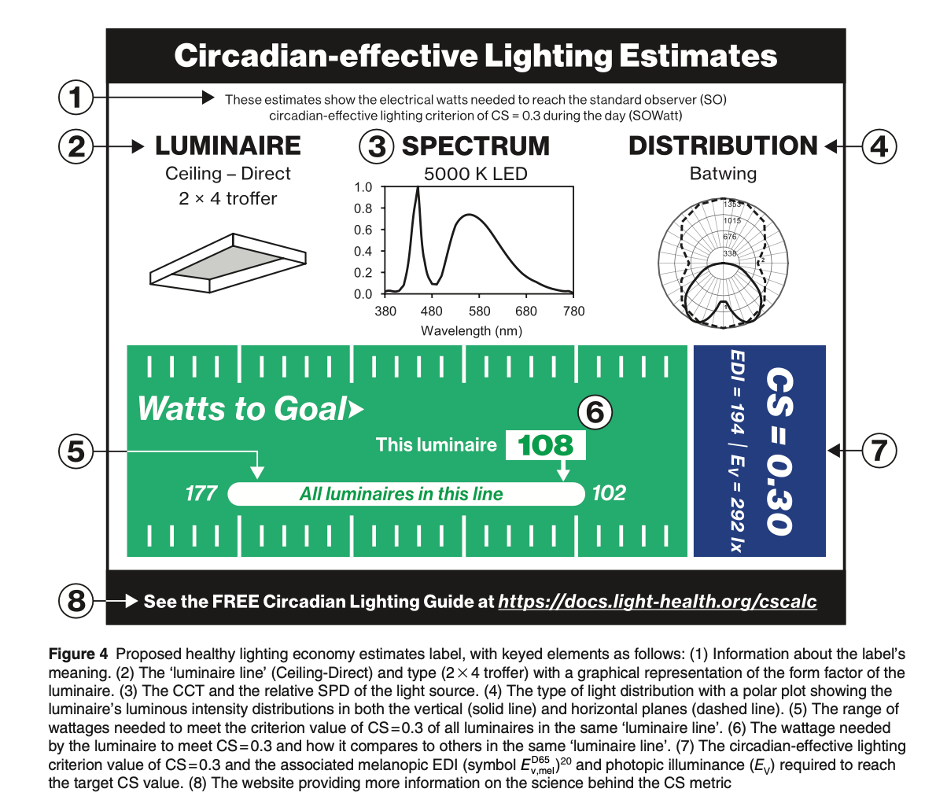The Light and Health Research Center (LHRC) at Mount Sinai is pushing for wider implementation of circadian-effective lighting to improve sleep and overall health. Ultimately, delivering circadian-effective lighting will depend upon the application, but unfortunately the lighting industry has lagged behind in developing practical tools to guide specifiers and manufacturers in selecting circadian-effective lighting systems. The LHRC believes a steppingstone to functional applications is to provide manufacturers and specifiers with standardized efficiency ratings of luminaires for (potentially) delivering circadian-effective light. To address this, the LHRC has proposed a standardized method for evaluating luminaires based on the electric power needed to deliver a criterion amount of circadian-effective light to an observer. This idea is conceptually like the USEPA automobile fuel efficiency standard – by providing the industry and the public with an efficiency standard, purchasing behavior is expected to change.
The methodology considers the efficiency of luminaires in terms of the electric power needed to deliver a criterion circadian stimulus value (SOWatt). Both spectral and optical factors contributing to a SOWatt value can be determined, either using virtual simulations or actual photometric measurements. The lower the SOWatt value, the more efficient optically or spectrally the luminaire.
 The LHRC even imagines having a SOWatt, circadian-effective luminaire efficiency label on the manufacturers’ websites and shipping materials. Like the USEPA fuel efficiency label, the SOWatt label does not guarantee circadian-effective light will be delivered in practice, but it certainly goes in the right direction.
The LHRC even imagines having a SOWatt, circadian-effective luminaire efficiency label on the manufacturers’ websites and shipping materials. Like the USEPA fuel efficiency label, the SOWatt label does not guarantee circadian-effective light will be delivered in practice, but it certainly goes in the right direction.

The above summary was taken from a paper titled “Standard observer watts: Evaluating the efficiency of circadian-effective luminaires using a standard observer methodology,” published by The Society of Light and Lighting. The authors, MS Rea PhD, A Bierman MS, A Thayer MS, C Jarboe MS, and M Figueiro PhD, from the Light and Health Research Center at the Icahn School of Medicine at Mount Sinai in New York, wrote the paper. It underwent review with the first draft received on June 3rd, 2022, revised on September 6th, 2022, and accepted on October 25th, 2022.




